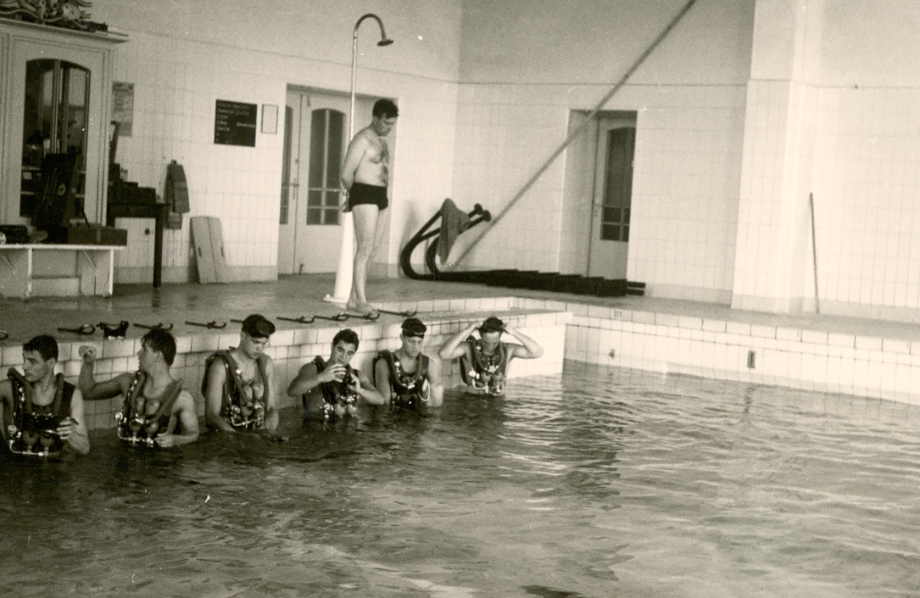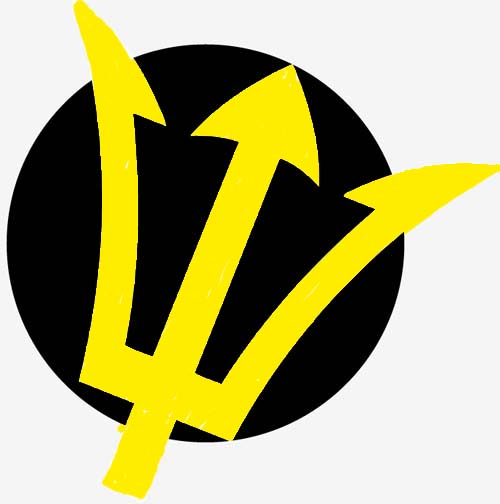
Die 1960er Jahre
On 1 July 1963 the Kampfschwimmer platoon was relocated as a detached unit from Borkum to the Carlshöhe naval barracks (Carlshöhe Kaserne) in the town of Eckernförde on the Baltic Sea. Commander at this time was Oberleutnant zur See (O-2, equivalent to US Navy Lt. j.g.) Bernd Kielow. The Naval Chief of Staff’s official Order Nr. 124 dated 1 April 1964 elevated the unit to the status of an independent company. The new Kampfschwimmer Company was placed directly under the administrative and operational command of the Amphibious Forces Command (Kommando der amphibischen Streitkräfte).
Order 124 defined the unit’s primary missions as:
a) commando operations against ships, docks, harbor installations, locks etc.;
b) beach reconnaissance;
c) “special missions”.
Secondary responsibilities were defined as:
a)conducting the final phase of Kampfschwimmer training;
b) readiness training both for commando personnel assigned to the company and for commando-qualified personnel assigned elsewhere.
Kapitänleutnant Günter Heyden was assigned as the company’s first commander. The company was divided into the command element and three Kampfschwimmer platoons (one heavy platoon, one light platoon and one specializing in beach reconnaissance).
On 1 October 1969 the “Amphibious Group” headquartered at Emden was redesignated the Amphibious Transport Group, but this had no effect on the Kampfschwimmer Company.
Kapitänleutnant Völsch continued to lead training of new naval commandos until 1967. Indoor training was conducted in List on the island of Sylt; open water training was conducted in Eckenförde and Olpenitz. Ranger, airborne and airmobile training courses were conducted at the airborne/airmobile school in Altenstadt. Demolitions training was conducted at the navy’s underwater weapons school. Additional instructors were regularly detached from the operational Kampfschwimmer Company in order to match the training to specific real-world requirements. One of the new company’s biggest concerns at this time was equipment acquisition. For example, finding the best rebreather system. At first the unit used the Dräger Lt.-Lund-II oxygen rebreather. The counterlung was made of waterproof canvas cloth. It was found to be vulnerable and was replaced in 1966 with the Lung-Automatic Rebreather (LAR) II. This encapsulated device, also made by Dräger, is worn across the chest. This qualitative upgrade animated foreign units to also acquire the LAR II.
The Company spent much time training and participating in exercises. One particular exercise designated Hopping Crocodile or HOP CROC deserves mention here. It was a triphibian (combined sea-air-land) exercise conducted before the eyes of astonished army officers in the training grounds near Varrelbusch. Thirty members of the Kampfschwimmer Company performed a twilight jump from a Noratlas transport plane, landed in the coastal waters and infiltrated the shoreline. On the third day of the exercise they conducted a surprise underwater attack on the reserve fleet tied up in Wilhelmshafen. Their success was noted! In the years to come the naval commandos would conduct raids on numerous sensitive facilities of the German armed forces, motivating the military to increase installation security.
Military innovation was ot restricted to Europe during the 1960s. John F. Kennedy ordered a reorganization of the United States military. This led, among other things, to the founding of the US Navy SEALs. SEAL is the acronym for Sea-Air-Land, and describe the SEALs’ operational environment. Much thought and planning went into creating the SEALs. Their baptism of fire came soon: the Vietnam War.
The German Kampfschwimmer’s operational concept was also no longer restricted to purely aquatic missions. Rather, the element of water became a conduit for covert approach, in order to conduct subsequent combat missions on land. The element of air was also included, and parachute techniques were developed to ensure safe delivery of personnel. The Kampfschwimmer became a triphibian warrior at home on and in the sea, in the air and on land. Even today the naval commandos enjoy the most broad-based training spectrum of any combat unit within the German armed forces. By the early 1970s the Kampfschwimmer’s new concept of operations had already formed the basis for their future allocation to the Special Operations Command.












